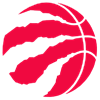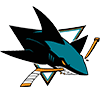With the All-Star break in the rear view mirror and the new, one-and-done trade deadline rapidly approaching, it's a good time to take stock of your situation and decide how you're going to deploy your resources for the rest of the season.
There are basically three categories of resource available for GMs in keeper and dynasty leagues: short-term player assets, long-term player assets, and FAAB dollars. While your position in the standings will obviously be the biggest factor in determining how you prioritize each of those, maximizing your return in all three categories is, on a macro level, the most important thing you can do from now until your own league's trade deadline. Let's break down each of them in turn.
FAAB
Depending on how you've played things to this point in the season, you either have a big stack of FAAB left (one of the top 2-3 budgets remaining), a medium stack, or a small stack (one of the bottom few budgets). You're also either competing for a spot in the money and/or a title, or you're not. There isn't enough time left to keep waffling and be on any sort of bubble – it's time to pick a lane, if you haven't already. Once you know whether you're in or out for the current season, it should be easy to figure out how you're going to spend your FAAB dollars, right? Well, there may be some angles you haven't considered yet.
Big stack, competing:
With the All-Star break in the rear view mirror and the new, one-and-done trade deadline rapidly approaching, it's a good time to take stock of your situation and decide how you're going to deploy your resources for the rest of the season.
There are basically three categories of resource available for GMs in keeper and dynasty leagues: short-term player assets, long-term player assets, and FAAB dollars. While your position in the standings will obviously be the biggest factor in determining how you prioritize each of those, maximizing your return in all three categories is, on a macro level, the most important thing you can do from now until your own league's trade deadline. Let's break down each of them in turn.
FAAB
Depending on how you've played things to this point in the season, you either have a big stack of FAAB left (one of the top 2-3 budgets remaining), a medium stack, or a small stack (one of the bottom few budgets). You're also either competing for a spot in the money and/or a title, or you're not. There isn't enough time left to keep waffling and be on any sort of bubble – it's time to pick a lane, if you haven't already. Once you know whether you're in or out for the current season, it should be easy to figure out how you're going to spend your FAAB dollars, right? Well, there may be some angles you haven't considered yet.
Big stack, competing: This is the most enviable position to be in, especially if you have the biggest budget of all and hold the hammer over your competition. The standard approach is to wait until the MLB deadline, see who the biggest winners are in terms of fantasy value (big stars crossing over in only leagues, or players who move into better roles such as newly minted closers or new starting position players in mixed leagues), then bid one dollar more than your closest opposition's max bid for the one(s) you want the most.
If you're leading in the standings and want to be sneaky, though, instead of prioritizing your own needs, figure out which FAAB targets the teams chasing you need the most, and bid one dollar more on them instead. Maybe you don't need another closer, but the team chasing you has 2-4 standings points they could easily gain by adding one. Keeping that closer out of their hands could be worth more to you than upgrading an outfield or CI spot.
You can also try to land multiple priority targets with smaller bids, but this can be a dangerous strategy that leaves you empty-handed if it all goes wrong. It requires a careful evaluation of not only everyone's max bids, but their historical spending habits and activity levels in recent weeks. In leagues where a lot of your fellow GMs are napping or don't tend to spend big after the deadline, though, you might just be able to thread the needle.
Big stack, not competing: If you're not competing this year in a keeper or dynasty league, you should be going all out to add pieces for the future. Having a large remaining FAAB budget gives you one more golden opportunity to do just that, by acquiring the biggest post-deadline names and then auctioning them off in trade to the highest bidder. You can also spread the wealth by making smaller bids (and thus, in many leagues, creating keepable salaries) on lower-profile players and prospects recently called up, who could have significant roles in 2020 – players like Bubba Starling or Robel Garcia are recent promotions who would fit that bill, and there are likely to be many more once deadline deals open up playing time on teams out of the playoff race.
Medium stack, competing: This is a tough spot. You probably want, and maybe even need, to land an impact player or two, but in all likelihood you're going to be outbid by some of your competition. It's sort of like the helpless feeling of heading into Final Jeopardy in second place when you have less than half the money of the leader – you need them to screw up, either in their wager amount or their response, to have a chance of winning even if you get the question right. While bidding the max you feel comfortable spending (leaving however many dollars for late-season emergencies) on your top target and crossing your fingers is often your best bidding strategy by default, it's not your best overall approach. Talk to any teams that fit the 'Big stack, not competing' label before the deadline, and make it clear to them you're be very interested in a deal for Players X and/or Y if they happen to wind up with them. If you can get those GMs going after your top targets, you can them use your own budget to acquire secondary options – giving you a shot at a real bounty if you can add some useful pieces in FAAB and through post-FAAB trades.
Medium stack, not competing: Everything said about the 'Big stack, not competing' group applies here, although it's generally safer to lean more towards the 'buy a lot of possible future contributors' strategy than the 'buy tradable assets' strategy. Again, the worst-case scenario is to come out of the post-deadline FAAB period empty-handed, with nobody to trade and nobody to stash for 2020 and beyond. If you do want to emphasize the latter, take a long look at who the teams chasing the championship are likely to be targeting, and stay away from them entirely. Focus your efforts on the next tier of talent, and if you can land one or two of them, you might still be able to package them up for a solid return in a trade.
Small stack, competing: If you're like me and sit in this group, it means you've been plenty active already and have probably already landed some difference-makers in FAAB. That doesn't mean you should just sit back and grab some popcorn to watch the bidding frenzy, though. Just as the rebuilding teams are looking to add some cheap players as keepers, you can pick up those same cheap potential keepers and flip them in smaller trades for some last-minute roster bolstering. It can sometimes pay off to put small bids in on basically every big-name target in the pool – especially in smaller leagues (10 or 12-tm), it's entirely possible that one or two will slip through the cracks and fall right into your lap. Targeting players at deep positions can improve your odds of landing someone in this way – there are always going to be teams needing a catcher if, say, Yasmani Grandal gets sent to the AL, but the same can't be said for a bog-standard .260, 25-HR outfielder.
Small stack, not competing: Maybe you took your shot early and injuries have turned this into a lost season, or maybe you've just been doing some heavy roster churn trying to find players to stash. Either way, you can either hope to get lucky with those 'fall through the cracks' players, or you can try to grab a few more stashes. Don't spread your budget too thin – figure out what the likely "low" bid is (patterns emerge in every league, and by this point in the season it should be clear whether GMs are still using $1 default bids to try and get guys cheap or have inched that up a bit) and go $1 more than it on as many players as you can target. It might even be worthwhile to sit out the immediate post-deadline bidding entirely, and then focus your efforts on later callups.
Long-term player assets
Generally, these are players on keepable contracts, although draft picks also fall into this category. I fully support the "flags fly forever" philosophy, but especially in dynasty formats, there comes a point of diminishing returns where trading long-term players assets only marginally improves your chances of winning this year while significantly hurting your core for future years. It can be very tricky to spot where that line is while your eyes are on the prize, though.
During the season, I tend to keep a rough list or spreadsheet of my potential keepers for next season. Knowing how many keeper slots you have, and how many options you have to fill them, can help you spot when it's time to back away from more dump deals. On the other hand, don't overvalue your keepers either. Know which ones should be part of your "untouchable" core, and which ones are simply along for the ride. In the Staff Keeper League, in need of more starting pitching if I'm going to make a climb from fourth place, I just dealt a $7 Amed Rosario signed through 2020 in a trade for an expiring Robbie Ray. If Rosario breaks out next year I could really regret it, but the chances of him becoming a pillar of my 2020 roster as opposed to just a useful complementary piece seem low at this point. The league also has a hard limit of 15 big-league contracts on your pre-auction keeper list, and even after dealing Rosario, I still have six 'locks' as keepers and 10 maybes, not including minor-leaguers like Andres Munoz or even Luis Robert who could lose their eligibility by September. Dealing a keepable Rosario was a tough decision, but it didn't seriously disrupt my plans for next season.
Even if you're not competing for anything this year, that doesn't mean every keepable player or draft pick you have should be untouchable. You should always be looking for upgrades, and if you have to give up a good asset in a deal to land a great one, don't flinch.
Short-term player assets
These are players on expiring contracts or who are too expensive to be realistically kept next year. (How you define "realistically" is always up for debate, of course. Todd Zola, to pick one prominent example, is a big proponent of protecting elite players at market price heading into the auction, on the theory that you have to spend that money anyway and you aren't likely to get a better player at a better price, and it's an approach I've had plenty of success with myself.)
If you're going for it this season, these are always going to be the first players you look at acquiring in so-called 'dump deals' – trading long-term assets for short-term ones – with teams out of the running. There are times, however, when you should be looking at trading them away yourself, particularly in roto formats. If you have a big lead in a specific category or linked categories – saves, steals, wins/strikeouts, that sort of thing – trading away a player on an expiring deal who helps you in those categories for a boost elsewhere can pay big dividends. It's maybe the trickiest type of deal to pull off – a trade between teams both competing for a title in the same year – but it also gives you an opportunity for a true win-win swap. It might also give you a chance at a rare win-win-lose deal, where you help yourself, help a competitor, and hurt a third competitor.
Consider the following scenario: you are in second place overall and have the best offense in the league by a fairly wide margin, but you need pitching. The team in third place sits in first in wins and strikeouts, but needs bats. The team in first place sits just ahead of the third-place squad in homers, runs and RBI.
You can see it, right? You trade a prime slugger on an expiring deal to that third-place team for an ace starting pitcher. You gain in pitching categories, they gain in hitting categories and not only boost their own fortunes, but steal points from the team you're both chasing. Bing bang boom, you're in first, your trade partner's in second, and the GM that thought they were cruising to a title is sitting in third wondering what hit them.
That's a perfect-world scenario, of course, and it might only come along once in a lifetime, like hitting a royal flush at the poker table. But you have to keep your eyes open for those sorts of possibilities if you're ever going to hit them.





































